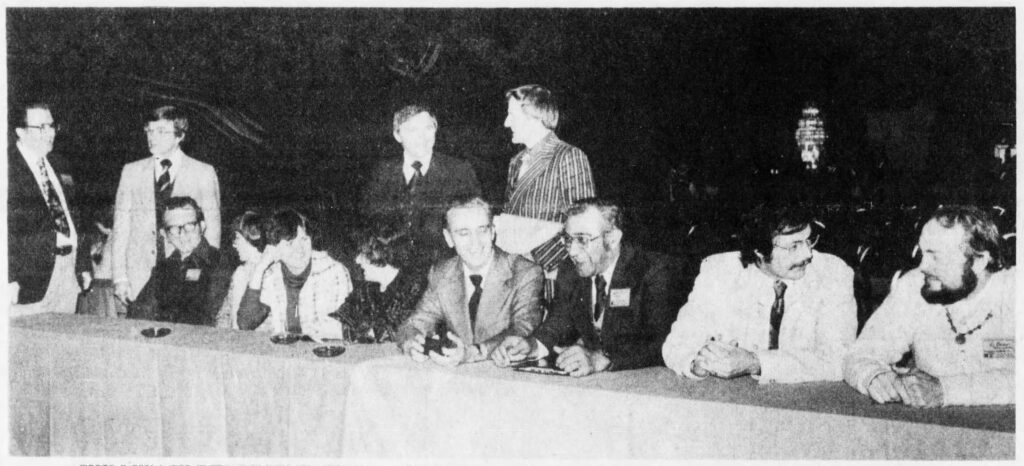The whole community must realize the difference between equal education and equal opportunity for education.
Dr. Stanley Blank, 1977.
This website will be looking at special education in Chilliwack predominantly in elementary, middle, and secondary school levels, with a brief look at special education in the pre-school and post-secondary school levels from 1960 until 1980. Originally, Chilliwack’s School District 33 began their special education program sometime in 1960, however I could not find a mention or record of this until March 10th 1965 in the Chilliwack Progress Newspaper. Special education was mainly focused on the primary, intermediate, and secondary levels however it is worth mentioning there were a few recourses and programs available for education at the pre-school aged level and the adult over 19 level.
Typically speaking when one thinks of the term “special education” they assume it is in reference to some sort of mental disability or some other type of impairment. This assumption is an oversimplification of a much more complex concept. Special education is any type of education that lays outside of traditional styles of education, and may require extra support or diverse supports. I have split Chilliwack’s special education programs of this time period into the following categories:
- Physically Handicapped; hard of hearing or deaf, visually impaired or blind, and speech impaired.
- Learning Disabled; mentally challenged, dyslexic, and hyperactive.
- Extra Supports; re-entry program, BRIDGE, hospital homebound program, and indigenous education.
- Alternative Students; behavioural issues
- Enrichment Programs; outdoor education, and gifted program.
I find it important to note that, although in our current time period we have a more in-depth understanding and a vaster list of terms, in my research these were the main classifications and ideas written about.
As you will read, Chilliwack was quite advanced in their special education programs in comparison with other surrounding areas such as Abbotsford, Mission, Langley, Surrey, Richmond, and Vancouver. With that being said these districts did tend to share special education resources on a cost-sharing basis as funding, government or otherwise, was sometimes a problem. Funding was a huge necessity for these special education programs because they required quite a bit more resources than traditional courses. Some of these needed extra resources were additional staff, specialized training for any adults interacting with certain special education students, special education equipment, special education tests, special schools (Sunshine Drive School and Jericho Hill School), and in programs that require students to be away from home there is the cost of housing, feeding, and transporting them. One aspect of additional staff that Chilliwack seemed to be a leader in is the LIP or Local Initiatives Program that was formed in 1972 by the Canadian Manpower Centre’s Chilliwack branch manager, J.E. Archeson. This was a government funded program that was founded on the basis of hiring unemployed teachers as teacher aides for the special education sectors in Chilliwack’s School District 33.
This funding could come from a multitude of places. Most obviously there is government funding, however, there were associations such as the Association for Children with Learning Disabilities, the Volunteer Aide Program, the Chilliwack Association for Parents of Children with Learning Problems, the Upper Fraser Valley Society for Handicapped Children, Chilliwack YM-YWCA, Kiwanis Club, and other community clubs. There was even a suggestion in 1967 by Richmond MLA, Ernie LeCour, to increase liquor taxes by 2% and sale’s taxes by 1% and use the increased revenue for handicapped children’s education.
From at least 1972, Mr. Mel Folkman was School District 33’s supervisor of special education. His main goal was to bring equal learning to all students via early intervention and identification of special needs children. He was quoted several times as calling these children “exceptional” which speaks volumes about his character and genuine want to help these children succeed. He believed heavily in integrated learning as to build social development, and he petitioned such ideas, however he did believe in a balance of integration and segregation on a school by school basis to give students the opportunity to be amongst peers while also getting individual help as needed. Chilliwack’s School District 33 seemed to be ahead of the times in this aspect because the British Columbia Teachers’ Federation (BCTF) did not start moving towards integration and smaller classrooms until a number of years later, though they were on par with specialized programs geared towards second language and vocational studies.

